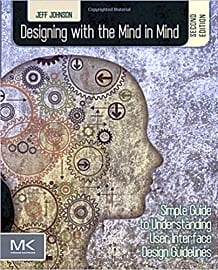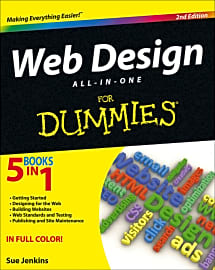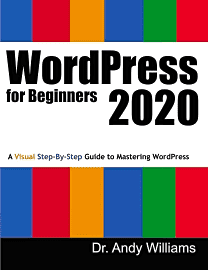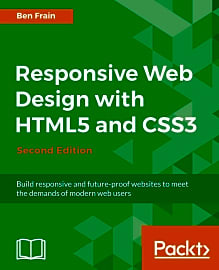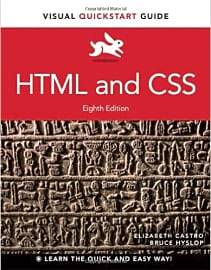The 10 Best Web Design Books

This wiki has been updated 38 times since it was first published in September of 2015. Although many web design tutorials are online-only these days, we understand that some people still prefer to hold a real book in their hands while they're studying. This list includes manuals that cover both evergreen concepts and new information in this fast-changing field. Whether you're a beginner or are already a technical whiz, one of these will help you improve your skills. When users buy our independently chosen editorial selections, we may earn commissions to help fund the Wiki.
Editor's Notes
June 29, 2020:
Most people looking for a good web design book are either going to need something that will introduce them to the fundamentals, like Learning Web Design: A Beginner's Guide, or something that offers a deep dive into a specific skill set for those who have already embarked on their site building journey. That group might find Responsive Web Design With HTML5 And CSS3 especially engaging, as it's intended to teach design for mobile platforms like smartphones and tablets.
We sent off Jon Duckett's HTML and CSS guide, as it had gotten way too long in the tooth (nearly 10 years old!) and much of the information was getting out of date. We replaced it with Web Design All-in-One For Dummies, which may not empower you to build the next Amazon, but it will certainly get just about anyone started in a way that won't make them feel stupid or discourage them.
And as long as readers don't mind a few curse words, they can get a dedicated course in refining their user experience design with UX For Beginners by Joel Marsh. Its section on planning and creating wireframes is extremely useful, and the author's voice is humorous throughout. WordPress For Beginners 2020 is a good option for designers looking to make the most of that specific platform, though only the lessons about overall design aesthetics can translate to non-Wordpress systems.
Are Web Design Books Useful?
In this environment, cutting costs until investors arrive is usually a key factor.
With the predicted 27 percent growth in the field by the year 2024, web designers are needed now more than ever. Web design books remain one of the most effective ways to learn concepts of web design at an individual pace and in an economical way.
If the your intent is to become a professional web designer, self study is one of the best options. Specialty schools, professional tutoring, and apprenticeship all have a rather large price tag attached to them in comparison to books, and provide much the same knowledge. With a web design book, the reader has the ability to learn at their own pace, and repeat concepts as needed to fully integrate them.
Web design books are equally as important for business owners and entrepreneurs looking to enter the growing startup economy. In this environment, cutting costs until investors arrive is usually a key factor. As a business owner, it may be better to learn basic concepts of web design before hiring an expensive designer, especially for simple changes. Web design books remain the most effective and comprehensive tool to do so.
What Is Covered In Web Design Books?
In the web design world, there are some concepts which must be understood before reaching the finer points of designing for the web. For instance, the idea of visual hierarchy. This is based on the known fact that in most cultures, people read in a similar way: left to right and top to bottom. This suggests that viewers favor the top and left sides of webpages. With this logic, it is easy to see why the company logo is nearly always found in the top left corner of the site.
With this logic, it is easy to see why the company logo is nearly always found in the top left corner of the site.
From there, viewing behavior becomes more complex. Viewers tend to scan a page rather than read it, and their eyes typically move in a pattern similar to the shape of the letter F or the letter Z. Basic web design will usually cater to this and place the most important elements of the site in their natural viewing path.
Web design books may also cover the importance of color in design. Rather than being a decoration on a website, color may actually play an integral role in the psychological response a consumer has to a particular brand. An example is the notion that the colors red and yellow stimulate the appetite and promote quick decision making. It is interesting to note that the most successful fast food chains use heavily red and yellow color schemes.
Any basic web designer will also need to understand the beauty in the simplicity of a site. It can be tempting to try and force a site to stand out by using many different fonts, highly contrasting color schemes, or bright animations. Research in the field tells us that this may scare away the same customers the site is trying to impress. A much more positive impression can be made by limiting font and color choices to two or three dominant options, and to shift the focus towards simplicity in the text.
How Important Is Web Design For A Business?
As the internet era took hold, the need for web designers exploded. This need is as present today as ever. Now that a website is an integral piece of a business's brand and strategy, its design is an important factor in their success for many reasons.
Proper web design offers a business a consistent image, or brand. Over time, viewers begin to identify with this image. This brand awareness is actually a determining factor in whether or not a customer will choose a particular company. Consumers are much more likely to purchase from a brand they identify with versus an unknown brand offering a similar product or service.
Web design can also help to properly target the correct audience.
In the modern era, most markets are saturated. Consumers are bombarded with advertisements, social media posts, invites, and push notifications from hundreds of different brands and businesses every day. The only way to stand out in a customer's mind is by differentiating your brand somehow. One of the simplest ways of doing this is through unique web design elements. A professionally designed website is much more appealing to the viewer, and is more likely to keep them reading as well as help build trust in your product or services. This increases the chance of them converting into a lead, or better yet a customer.
Controlling the customer journey is one of the most important aspects of web design. Most people put as little effort as possible into reading the contents of a site. This is why it is so important that the content and design match up. Proper web design will empower the content to catch the eye of the reader, keep them reading, and lead them to the desired action.
Web design can also help to properly target the correct audience. Some target audiences respond well to a minimalist design, while others like things spelled out for them. Some readers require heavy logic and well-researched text, while others are affected solely by the emotional elements of web design. Understanding web design enough to create a site based around the target audience will ensure its success.


